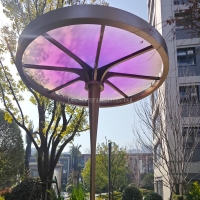Welcome to the website for landscape facilities products and knowledge.
How do weatherproofing techniques vary for landscape chairs used in coastal versus inland regions?
When selecting landscape chairs for outdoor spaces, weatherproofing is a critical consideration—especially when comparing coastal and inland environments. The techniques used to protect chairs in these regions vary significantly due to differing exposure to elements like saltwater, humidity, and temperature fluctuations.
Coastal Regions:
Chairs in coastal areas face relentless saltwater spray, high humidity, and strong winds. To combat corrosion, manufacturers often use marine-grade stainless steel, aluminum, or powder-coated metals that resist rust. Synthetic materials like HDPE (high-density polyethylene) or UV-stabilized polypropylene are popular for their resistance to fading and degradation from salt and sun. Additionally, tightly woven, quick-drying fabrics prevent mold and mildew buildup.
Inland Regions:
Inland chairs encounter less salt exposure but may face extreme heat, cold, or heavy rainfall. Here, powder-coated steel, teak, or cedar wood are common choices due to their durability against temperature changes. Cushions often feature water-resistant but breathable fabrics to prevent moisture retention. UV protection is still essential, but the focus shifts more toward thermal expansion resistance.
Key Differences:
- Coastal chairs prioritize rust-proof metals and salt-resistant synthetics.
- Inland chairs emphasize materials that withstand temperature swings and dry climates.
- Both require UV protection, but coastal furniture needs additional anti-corrosion treatments.
By understanding these distinctions, buyers can invest in landscape chairs that endure their specific regional challenges, ensuring long-lasting outdoor comfort.
Related search:

Recommendation
Metal frame with gradient color acrylic combined with high-end shading landscape facilities